Text
Reflections
Reflecting on the research into my ancestral journey for my semester project for Digital History has been an enlightening and profoundly personal experience. Tracing the paths that my ancestors took, from the Crusades of the Holy Lands to the rural farmlands of Ireland and ultimately across the ocean to America, has not only broadened my understanding of historical migration patterns but has also deepened my connection to my family's past. I've learned how historical events shaped individual lives, driving my ancestors to make perilous journeys in search of safety and better opportunities.
This project has also underscored the power of digital tools in uncovering and reconstructing the past. Utilizing digital archives and mapping technologies has allowed me to visualize routes, understand geographical contexts, and connect disparate pieces of historical data in a coherent narrative. The experience has been both humbling and inspiring, reminding me that each data point in a census or a passenger list is not just information but a story of resilience and hope. It has instilled in me a greater appreciation for the hardships and triumphs of those who came before me, shaping not only the course of their lives but also the fabric of history itself.
As I reflect on this project, I am acutely aware that everyone’s ancestral journey is unique, marked by distinct challenges and contexts. It is important to acknowledge that while some families, like mine, migrated in search of new opportunities, others were forcibly moved through mechanisms like slavery or displaced by persecution and martyrdom. This research has taught me to appreciate the diversity of historical experiences and to approach the stories of others with empathy and respect. In recognizing the varied and often painful legacies that accompany many ancestral histories, we gain a fuller, more inclusive understanding of our past.
0 notes
Text
A Delicate Balance
In the unique intersection of personal history and academic research, genealogists often face the challenge of maintaining objectivity while delving into their own family stories. My own project, which traces my maternal ancestry from Europe to America in the 19th century, serves as a canvas not only for historical exploration but also for personal discovery. The dual nature of this endeavor raises a crucial question: How can I maintain objectivity and academic rigor in presenting a project so close to my heart?
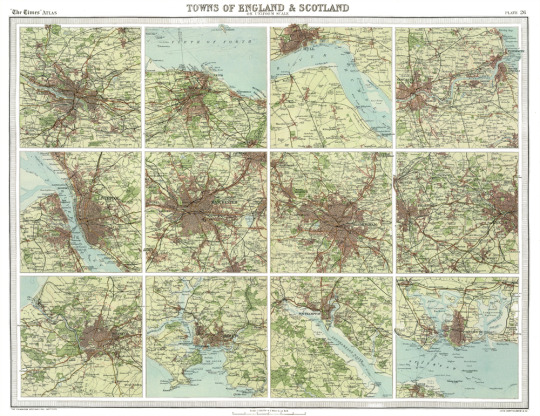
Foundation in Evidence
The cornerstone of any academic project is its reliance on evidence. In genealogical research, this means each claim, each story, and each connection must be meticulously supported by historical documents, records, and verified data. Personal engagement can enrich the narrative, adding depth and context, but the backbone of the presentation must be factual and well-supported. Whether it's birth and death records, migration documents, or historical accounts that contextualize an ancestor's decisions, the integrity of the project depends on these concrete pieces of evidence.
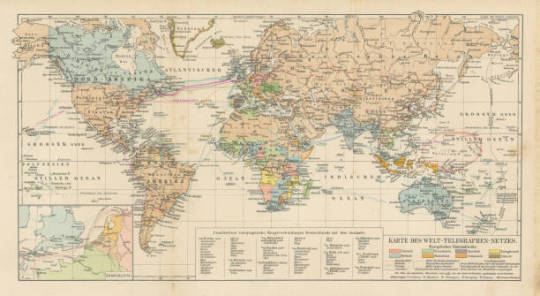
Methodological Analysis
Applying academic methodologies to the analysis of personal stories helps in maintaining a rigorous approach. This involves not only the critical evaluation of sources but also the application of historical methods to understand and interpret the broader implications of personal events. For instance, when considering why an ancestor migrated at a particular time, it's essential to look at economic, social, and political factors influencing those decisions, rather than merely recounting a family narrative. This approach ensures that the personal stories are framed within a larger historical perspective, lending both credibility and depth to the research.
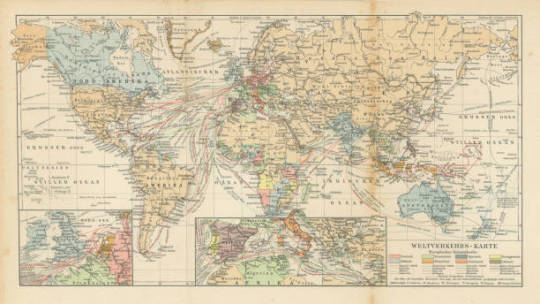
Balancing the personal with the academic in genealogical research is not only about safeguarding the project’s scholarly value; it is about enriching the narrative. By grounding personal engagement in solid evidence, applying rigorous methodologies, and clearly distinguishing between fact and reflection, the project becomes a testament to both the researcher's heritage and their commitment to historical discipline. This approach not only enhances the credibility of the work but also deepens the audience's engagement, providing them a model of how personal history can inform and enrich our understanding of the past.
0 notes
Text
Unveiling the Blueprint
As I delve deeper into the labyrinth of my family’s history, I’ve realized the importance of outlining a clear and structured plan for how this genealogical project will unfold. The journey thus far has been both enlightening and challenging, revealing the need for a well-defined approach to navigate the complexities of ancestral research. In this post, I aim to demystify the process and share the roadmap that will guide this historical expedition.

Comprehensive Research and Data Collection
The foundation of this project rests on rigorous research and data collection. This phase involves delving into a variety of sources, including online databases, family archives, public records, and historical societies. The goal is to gather as much information as possible about my ancestors, from basic details like birth and death dates to more nuanced aspects like their occupations, lifestyles, and the historical contexts they lived in.
Data Verification and Organization
With a wealth of information at hand, the next crucial step is to verify and organize the data. This involves cross-checking facts, corroborating dates and events, and ensuring accuracy in the lineage connections. Organizational tools like genealogical software, spreadsheets, and digital folders will be employed to categorize and store the collected data systematically, ensuring ease of access and reference as the project progresses.
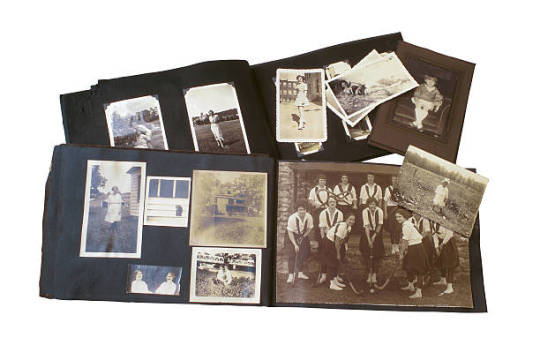
Creating the Narrative Structure
The heart of this project lies in weaving the collected data into a compelling narrative. This step involves drafting the stories of individual ancestors and their journeys, connecting these narratives to create a cohesive and engaging family history. The narrative will not only chronicle the factual timeline but will also delve into the socio-cultural contexts, personal anecdotes, and significant events that shaped my ancestors’ lives and decisions.
Developing the Interactive StoryMap
With the narrative structure in place, the focus will shift to developing the interactive StoryMap. This digital platform will visually represent the migratory paths of my ancestors, integrating the narrative with maps, photographs, documents, and multimedia elements. Each point on the map will correspond to a story or event in the family’s history, allowing users to explore the journey in an engaging and immersive manner.
Review, Refinement, and Presentation
The final phase of the project involves a thorough review and refinement of the narrative and StoryMap. Feedback from peers, mentors, and potentially family members will be solicited to ensure accuracy, coherence, and engagement. Adjustments and enhancements will be made based on this feedback, culminating in the final presentation of the project. This presentation will not only showcase the genealogical journey but will also serve as a platform to share the insights and personal reflections garnered through this exploration.
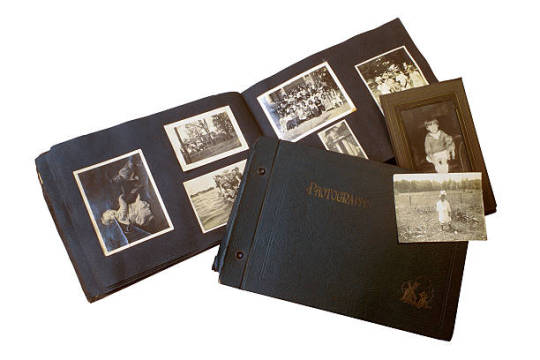
This genealogical project is more than a mere academic task; it is a voyage into the past, seeking to reconnect with the roots that ground our present and shape our future. By outlining a clear and systematic approach, I aim to ensure that this journey is both fruitful and fulfilling, offering a comprehensive and heartfelt homage to my ancestors’ legacies. Through this project, I aspire to create a bridge between the past and the present, enriching our understanding of family heritage and the continuous thread of human history.
0 notes
Text
Facing the Fatigue: Tackling Mental Overload in Genealogical Research
In the latest leg of my genealogical expedition, I've encountered not just the expected logistical and research challenges but also a less anticipated yet equally daunting adversary: mental overload and information exhaustion. The journey, while intellectually fulfilling, has become a test of endurance as I grapple with the sheer volume of data and the emotional weight of familial discovery.

Information Overwhelm
The initial thrill of uncovering ancestral secrets has given way to the realization of the mammoth task at hand. The abundance of information, from census records to personal letters, while invaluable, has become overwhelming. Sifting through centuries of documents, trying to connect dots across continents and eras, has led to a saturation point where each piece of data begins to blur into the next.
The complexity of constructing a coherent narrative from disparate threads of history has compounded this sense of mental exhaustion. Each breakthrough in research often unveils further questions and avenues for exploration, leading to a seemingly endless cycle of investigation and analysis.
Emotional Exhaustion

Beyond the intellectual challenge, the emotional impact of delving deep into family history has taken a toll. Uncovering stories of hardship, migration, and loss has been a poignant reminder of the struggles faced by my ancestors. While these discoveries add rich layers to the family narrative, they also bring a sense of sorrow and empathy that adds to the mental burden.
The personal nature of this project, intertwined with the ongoing health concerns of my elderly grandmother, has blurred the lines between academic research and personal life, leading to a constant state of mental engagement and emotional investment.
Strategies for Managing Overload
To combat these feelings of overload and exhaustion, I’ve had to take deliberate steps. Prioritizing tasks, setting realistic goals, and allowing for breaks in research have become essential practices. Recognizing the need for mental rest, I’ve started to allocate time for activities that help recharge my cognitive batteries, like walking, meditation, or simply stepping away from the research for a day or two.
Furthermore, I’ve found it crucial to maintain a structured approach to research, using organizational tools and methods to keep track of data and progress. This not only aids in managing the information flow but also helps in creating a balanced and healthy work rhythm.

In Conclusion
The journey of tracing one’s ancestry is as much an emotional and mental endeavor as it is an academic one. While the challenges of mental overload and information exhaustion are real, they are also manageable with the right strategies and mindset. Acknowledging these hurdles and taking proactive steps to address them has been vital in continuing this deeply meaningful exploration of my family’s past. As I move forward, I remain committed to this journey, equipped with better tools and approaches to manage the demands it places on my mind and emotions.
0 notes
Text
Navigating Through Challenges
Roadblocks in Research and Personal Strife
In the journey of tracing my family's history, I've hit some unexpected roadblocks that have slowed my progress and tested my resolve. This post aims to shed light on these challenges, both in research and personal life, as I navigate through this intricate project.
Research Roadblocks
One of the major hurdles has been the scarcity of reliable records from the 19th century for certain branches of my family. Despite exhaustive searches in online databases and local archives, some ancestral lines remain shrouded in mystery, with gaps that are hard to fill. Additionally, language barriers and faded, illegible documents have further complicated the task, making it difficult to piece together the complete picture of my family's past.
Another issue has been the inconsistency in historical records. Dates and names sometimes vary between documents, leading to confusion and requiring extra time to verify and reconcile these discrepancies. This has not only slowed down my research but also made it challenging to maintain a clear and accurate lineage in the StoryMap.
Family Matters
On a personal note, my family has been going through a tough time with my 95-year-old grandmother's health deteriorating. Her illness has taken a toll on the family, both emotionally and logistically, as we come together to support her and each other. This situation has inevitably affected my focus and availability for research, as family commitments take precedence.
The emotional strain of seeing a loved one in decline is profound, and it has certainly cast a shadow over my enthusiasm for the project. Balancing the demands of personal life with the rigors of academic research has been a struggle, leading to a slower pace of work and periods of reduced productivity.
Moving Forward
Despite these roadblocks, I am committed to continuing my genealogical exploration. I recognize that these challenges are part of the journey and that overcoming them will only add to the depth and authenticity of the project. In the meantime, I will need to find a balance between supporting my family and progressing in my research, accepting that some days will be more productive than others.
The experience of dealing with these roadblocks, both in research and personal life, has underscored the unpredictable nature of this endeavor. As I navigate these difficulties, I remain hopeful that each step forward, no matter how small, will lead to meaningful discoveries and a richer understanding of my family's history.
0 notes
Text
As my journey through the annals of family history reaches its midway point, I pause to reflect on the progress and insights gleaned from this intricate exploration. The task of unraveling the threads of my maternal ancestry has proven to be both a scholarly endeavor and a deeply personal pilgrimage, offering a window into the lives and legacies of those who preceded me.
Intertwining Narratives and Historical Contexts
In recent weeks, my focus has shifted towards contextualizing the individual stories within the broader tapestry of historical events. This endeavor has led me to explore the socio-political climates of 19th-century Europe and America, shedding light on the forces that propelled my ancestors across continents. The integration of historical events with personal journeys has enriched the narrative, providing a more holistic view of my family’s past.
Digital Storytelling: Enhancing the Narrative Journey
The development of the StoryMap continues to be a pivotal aspect of my project. With each entry, the digital landscape becomes more detailed, offering viewers a journey not only through space but also through time. Recent additions include voice recordings of family stories, which breathe life into the text and images, creating a multi-sensory experience that enhances the connection between the present and the past.
Challenges and Revelations
One of the more challenging aspects has been ensuring the accuracy of the information, as historical records can sometimes be ambiguous or contradictory. This has necessitated a careful and critical approach to research, often requiring cross-referencing multiple sources to corroborate facts. Despite these challenges, each piece of confirmed information adds a satisfying clarity to the family mosaic.
Reflecting on the Journey So Far
This project has become more than a mere academic task; it is a tribute to the resilience and fortitude of my ancestors. It has also been a profound personal journey, offering insights into my own identity and heritage. The process of piecing together the puzzle of my past has been a poignant reminder of the interconnectedness of our histories and the shared narrative of humanity.
Looking Forward
As I continue this journey, I anticipate further discoveries and connections that will enhance the richness of the narrative. The next phase will involve a deeper dive into the cultural heritage of my ancestors, exploring the traditions, beliefs, and values they carried with them to their new homeland.
This midway reflection marks not an end but a checkpoint in a continuing voyage of discovery. I remain committed to weaving a narrative that is not only informative but also evocative, capturing the essence of a family journey that mirrors the larger human experience. Join me as we continue to trace the echoes of the past, uncovering the stories that bind us across time and space.
0 notes
Text
Navigating Ancestral Currents: Progress Report on My Genealogical Journey
In the realm of historical exploration, every piece of data, every document, and every narrative holds the potential to illuminate the shadows of the past. Since my last missive, I have ventured deeper into the labyrinth of my ancestry, charting the course through the mists of time that enshroud my mother's lineage. This journey, while arduous, has been replete with moments of revelation and insight, shedding light on the intricate paths trodden by my forebears from the heartlands of Europe to the shores of America in the 19th century. Herein, I offer a glimpse into the progress of this academic and personal odyssey.
Archival Adventures and Digital Delves
The initial phase of my project was marked by extensive archival research. Delving into the depths of online databases and physical repositories, I unearthed a wealth of documents that serve as the bedrock of my genealogical quest. Birth certificates, marriage records, emigration documents, and ship manifests have woven a complex narrative tapestry, revealing not just names and dates but the very essence of my ancestors’ lives.
In parallel, my digital excavation unearthed a trove of resources. Platforms like Ancestry.com and FamilySearch have been invaluable in tracing the genealogical threads across continents and centuries. The integration of these digital findings with the tangible relics of my family’s past has been a meticulous yet rewarding endeavor.
StoryMap Synthesis: Bridging the Past and Present
The heart of my project lies in the creation of an interactive StoryMap, a task that has proven both challenging and enlightening. This digital canvas has begun to burgeon with points of interest, each marked by a story, a journey, or a significant life event. Crafting these into a coherent narrative has required a nuanced understanding of historical context, family dynamics, and the broader socio-economic currents of the times.
The StoryMap is evolving into a vivid portrayal of my ancestors’ migrations, highlighting their routes, destinations, and the numerous stops along their journey. The integration of multimedia elements – photographs, letters, and oral histories – has added a rich, immersive layer to the experience, allowing users to engage with the past in a dynamic and interactive manner.
Challenges and Reflections
The journey has not been without its challenges. Piecing together disparate fragments of history, often from documents weathered by time or marred by the scarcity of records, requires a blend of detective work and scholarly analysis. Each breakthrough, however, brings with it a sense of connection and understanding, bridging the temporal divide between past and present.
Moreover, the project has underscored the importance of preserving these narratives as conduits of cultural and familial identity. In mapping the journeys of my ancestors, I am not merely charting geographical shifts but am also tracing the evolution of identity, resilience, and the enduring human spirit.
Looking Ahead
As I continue this scholarly pilgrimage, the path forward is illuminated by the knowledge of those who walked before me. The project, while rooted in the past, is a living entity, growing and evolving with each new discovery. My aim is to not only chart a genealogical map but also to craft a narrative that resonates with the universal themes of migration, heritage, and identity.
In the coming months, I anticipate further enriching this digital tapestry with detailed narratives, contextual analyses, and enhanced interactive elements. The journey is far from over, and I invite you, dear reader, to remain a companion on this voyage through history, as we unravel the complex, beautiful skein of ancestry and memory.
Stay tuned for the next update, where I hope to share more stories unearthed, challenges surmounted, and insights gained in this quest to connect with my past and, through it, understand the broader tapestry of human history.
0 notes
Text
Course Project
"Across Continents and Centuries..."

Today, I find myself reflecting on the genesis of a project that has become not just an academic endeavor but a personal pilgrimage through time and space. It's a journey that seeks to trace the winding paths of my ancestors from the varied landscapes of Europe to the new world of America in the 19th century. Allow me to share with you the inception of this quest—a digital genealogical project that aims to map the journeys of my mother's family.
The idea blossomed one evening, as I found myself ensconced in the comforting embrace of family albums and the yellowed pages of letters that whispered secrets of the past. Each photograph, each handwritten line, was a portal to an era bygone, carrying tales of hope, struggle, and resilience. It was during these moments of quiet introspection, surrounded by the artifacts of my ancestry, that a question began to unfurl in my mind: How did the stories of my ancestors, hailing from such diverse corners of Europe as Prussia, Switzerland, France, and the British Isles, weave together to form the tapestry of my family's history in America?
In the pursuit of answers, I turned to the vast expanse of the internet, where online databases promised the keys to unlock these past lives. Yet, the more I delved, the more I realized that this was not just about charting genealogical data or constructing family trees. It was about piecing together a narrative, one that could capture the essence of these individual journeys and their contributions to the mosaic of American history.
Thus, was born the concept of my project: to create a StoryMap that would not only document these migrations but also tell the stories of my ancestors with a depth and vibrancy that mere dates and places could not convey. This digital platform would allow me to merge the rich historical context with the personal anecdotes and family lore that I had gathered, presenting it in an interactive format that could engage and enlighten both myself and others.
As I embark on this digital genealogical adventure, I am reminded of the importance of preserving these narratives. They are not just the stories of my family; they are threads in the larger fabric of human history, illustrating the universal themes of migration, identity, and the search for a better life. Through this project, I hope to honor the memory of those who came before me, giving voice to their dreams and struggles, and in doing so, perhaps find a deeper understanding of my own place in this continuum of history.
So, dear reader, I invite you to join me on this journey. Let us explore together the stories that bind us, the histories that define us, and the connections that remind us of our shared humanity. Stay tuned for updates, insights, and reflections as we navigate the past, mapping a course through the annals of family and history.
0 notes
Text
Navigating the Past and Future Through History: A Reflection
In our journey through historical inquiry, three assigned texts have recently guided my exploration: "The History Manifesto" by Guldi & Armitage, "The Malayan Emergency" by Taylor, and "The Dangerous Art of Text Mining" by Guldi. Each of these works, though distinct in their focus, weave together a compelling narrative about the importance of historical perspective in addressing contemporary challenges.
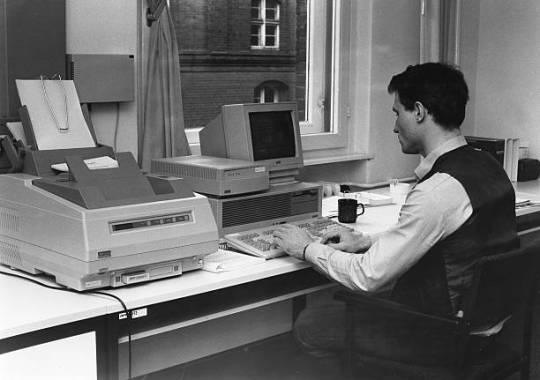
The introductory selection from "The History Manifesto" urges a return to longue durée historical analysis to better understand and solve global issues such as climate change and inequality. Guldi and Armitage argue that a broader, more inclusive view of history can inform policy decisions and foster a more sustainable future.
In contrast, "The Malayan Emergency" delves into a specific historical episode, providing a detailed account of the guerrilla warfare in Malaya. Taylor's meticulous research offers insights into colonialism, military strategies, and the complexities of national liberation movements, highlighting the nuanced interplay between local and global dynamics.
Meanwhile, "The Dangerous Art of Text Mining" presents a methodological revolution, illustrating how digital tools can unearth new insights from historical texts. Guldi's work showcases the potential of text mining to reveal patterns and trends that traditional analysis might overlook, encouraging a more data-driven approach to historical research.

Together, these readings underscore the relevance of history in contemporary discourse. They demonstrate how historical knowledge, coupled with innovative methodologies, can illuminate the paths through current crises and towards future possibilities. As we navigate the complexities of the 21st century, these works remind us of the indispensable value of looking back to move forward.
Sources
Dan Edelstein, Paula Findlen, Giovanna Ceserani, Caroline Winterer, and Nicole Coleman, “Historical Research in a Digital Age: Reflection from the Mapping the Republic of Letters Project,” American Historical Review vol. 122 no. 2 (April 2017), 400-424
Jo Guldi, David Armitage. The History Manifesto. Cambridge, UK: Cambridge University Press, 2014, pp. 88-116.
Jo Guldi. The Dangerous Art of Text Mining. Cambridge, UK: Cambridge University Press, 2023, pp. 1-22.
#libraries and archives#museum archives#library aesthetic#digital archives#maps#archives#digitization
0 notes
Text
Week 4 Post
This week we were assigned a number of articles to read.
Bodies and Structures
The article "Bodies and Structures: Overview Essay" by David R. Ambaras and Kate McDonald introduces a digital project aimed at exploring spatial history in East Asia. The project utilizes a "deep mapping" approach to analyze the dynamics of place-making and spatial histories without prioritizing any single narrative. It emphasizes the historical and social construction of space and place, advocating for a methodology that reads across places to understand how different experiences and articulations of place inform concepts of space. The project encourages collaborative scholarship and utilizes digital tools to present a multifaceted view of historical spaces, challenging traditional cartographic representations and inviting users to engage with history through a spatial lens.
What is Spatial History?
The article "What is Spatial History?" by Richard White discusses the Spatial History Project at Stanford University, highlighting its approach to history through spatial analysis. Key points include:
Spatial history operates outside conventional historical practices by emphasizing collaborative projects that integrate various expertises, focusing on visualization over textual analysis, and utilizing digital tools to handle complex data.
It challenges traditional narrative-driven history by prioritizing space as a critical dimension of historical inquiry, arguing that spatial relations and practices are fundamental to understanding historical processes.
Projects are designed to be open-ended, contributing to a scholarly commons, and are deeply intertwined with digital history, leveraging technologies like GIS for innovative explorations of the past.
The article critiques the limited attention historians have traditionally given to space, advocating for a more integrated approach that considers the production of space as an historical act.
It emphasizes movement as a key to understanding spatial relations, highlighting the dynamic nature of space as opposed to static representations like maps.
White's discussion positions spatial history as a promising field that offers new insights into historical phenomena by foregrounding the significance of space and place in shaping human experiences.
Introduction: What is Historical Game Studies?
This article discusses the evolution and current state of historical game studies, emphasizing the field's growth from focusing on specific game analyses to broader considerations of games' representations of the past and their cultural impact. It highlights:
William Uricchio's foundational work on the simulation and historical aspects of computer games.
The shift from viewing historical games as educational tools to appreciating their broader cultural and representational significance.
The development of historical game studies into a distinct field concerned with how games represent, engage with, and influence understandings of history.
The move away from debates on historical accuracy towards more nuanced discussions about games' formal properties, their representation of history, and their interaction with players' perceptions of the past.
The influence of broader theoretical developments in history, cultural studies, and memory studies on historical game studies.
The expanding focus of the field to include player and developer perspectives, the impact of games on collective memory, and the potential of games in education and heritage.
This analysis reflects historical game studies' maturing as a field, emphasizing its interdisciplinary nature and the diverse methodologies it employs to understand the complex relationship between history and games.
Ambaras, David R. and Kate McDonald. "What We're Doing." In Bodies and Structures: Deep-Mapping Modern East Asian History, edited by David R. Ambaras and Kate McDonald. 2019. https://scalar.chass.ncsu.edu/bodies-and-structures/what-were-doing.
Chapman, Adam, Anna Foka & Jonathan Westin. "Introduction: What is Historical Game Studies?", Rethinking History, 2017, vol. 21, no. 3, 358-371, DOI: 10.1080/13642529.2016.1256638.
White, Richard. "What is Spatial History?" Spatial History Lab, 2010. https://web.stanford.edu/group/spatialhistory/media/images/publication/what%20is%20spatial%20history%20pub%20020110.pdf
0 notes
Text
Exploring the Digital Age of History in Jason Steinhauer's History, Disrupted
In an era where the internet reigns supreme, Jason Steinhauer's History, Disrupted: How Social Media and the World Wide Web Have Changed the Past provides a timely and crucial exploration into how digital technologies, particularly social media and the Internet, are reshaping our understanding of history.

The Democratization of History
One of the most significant points Steinhauer addresses is the democratization of information. The internet has empowered anyone with a connection to share their perspective on historical events. This has been a double-edged sword. While it has surfaced diverse and previously underrepresented narratives, contributing to a more inclusive historical understanding, it has also opened floodgates to misinformation, conspiracy theories, and revisionist histories, often driven by ideological biases.

The Historian's Dilemma in the Digital Age
Professional historians find themselves in a tricky situation in this digital landscape. They are no longer just competing against traditional academic methods of historical research and publication but are also grappling with the rapid dissemination (and distortion) of information online. Steinhauer puts a spotlight on the necessity for critical thinking and digital literacy in deciphering this complex web of narratives.

The Impact of Social Media
A pivotal aspect of Steinhauer's book is the influence of social media platforms. He insightfully points out how these platforms, through their algorithms and tendency to create echo chambers, can shape and sometimes warp public perceptions of history. Sensational and controversial content often gets more visibility, leading to a skewed understanding of historical events.

Adapting to Change
History, Disrupted isn't just an analysis of the current state of historical understanding; it's also a guide on how historians and educators can adapt. Steinhauer proposes that embracing digital mediums and social media is essential for historians to effectively communicate accurate historical knowledge and combat misinformation.

Final Thoughts
In conclusion, History, Disrupted is a compelling dive into the intersection of history and digital technology. It underscores the transformative effect of the internet on our comprehension and debates surrounding history, urging professionals and the general public to approach this new terrain with both caution and critical awareness.
This book is not just for historians or academics; it's a must-read for anyone navigating the vast and often confusing world of information on the internet. As we continue to witness the evolution of how history is told and retold, History, Disrupted serves as a crucial guide for understanding and engaging with the past in the digital age.
0 notes
Text
The Digital Lens: Reframing History in the Age of Technology
Welcome to my first blog post for my Digital History course! Today, we dive into the fascinating intersection of history and technology. We live in a world where digital tools and platforms are reshaping how we view, interpret, and engage with our past. This blog aims to explore the impacts and implications of this digital revolution on our understanding of history.

The Rise of Digital Archives
One of the most significant advancements in digital history is the emergence of digital archives. These online repositories have democratized access to historical documents, photographs, and artifacts, previously confined to the dusty shelves of distant libraries and archives. By bringing these resources to our fingertips, digital archives have opened new doors for researchers, students, and the general public. However, they also pose challenges, such as the need for digital preservation and concerns about the representativeness and completeness of these collections.

Social Media: A Double-Edged Sword
Social media platforms have become unexpected allies in the dissemination of historical knowledge. They allow for rapid sharing of historical facts, images, and narratives, creating a more inclusive and diverse historical discourse. Yet, this democratization comes with the risk of misinformation and oversimplification. It’s a battleground where historical accuracy often vies with sensationalism.
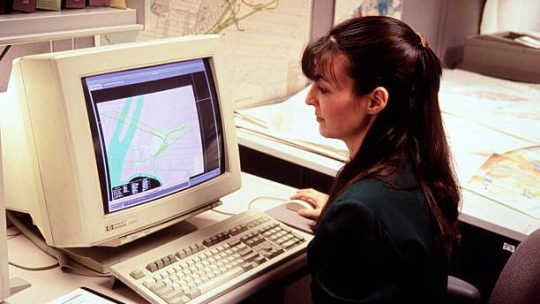
Big Data: A New Frontier in Historical Research
The application of big data in history is transforming how we analyze the past. Data analytics and text mining enable historians to process vast amounts of information, uncovering patterns and connections that were previously impossible to discern. This quantitative approach to history offers a complementary perspective to traditional qualitative analyses but also raises questions about the interpretation and presentation of data-driven findings.

Virtual Reality and Video Games: Experiencing History Anew
The use of virtual reality (VR) and video games in presenting historical events is perhaps the most immersive application of digital technology in history. These platforms offer a ‘walk through’ experience of historical moments, providing an emotional and experiential understanding of the past. However, the line between historical accuracy and entertainment often blurs in these mediums, raising debates about the ethical implications of ‘playing’ history.

Conclusion
As we navigate the digital age, it’s crucial to critically assess these tools and methods. They offer incredible opportunities to enhance our understanding of history, but they also require us to be vigilant about the accuracy and integrity of the historical narratives they create. In future posts, I’ll delve deeper into specific examples and case studies, demonstrating how digital history is reshaping our understanding of the past.
Stay Tuned!
Join me on this journey as we explore how technology is rewriting history, one digital page at a time.
#digital archives#public libraries#libraries and archives#museum archives#national archives#digital history
1 note
·
View note